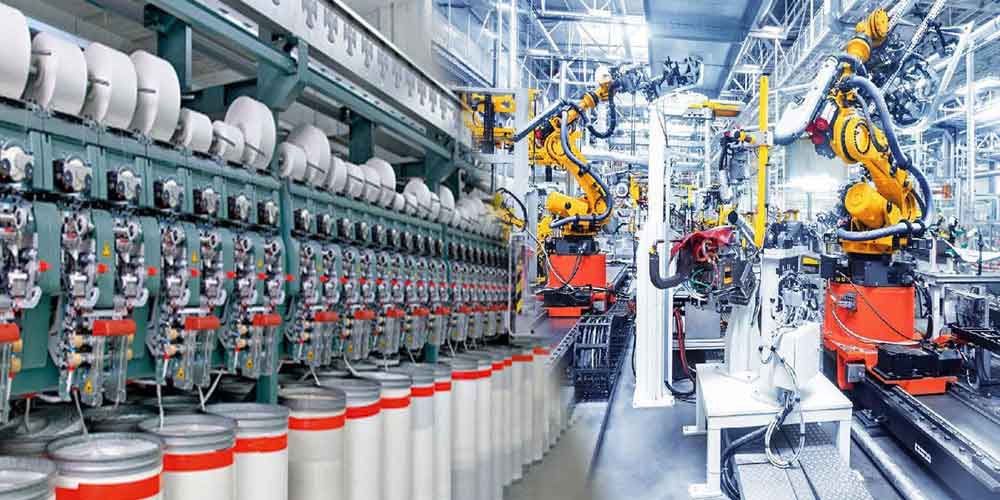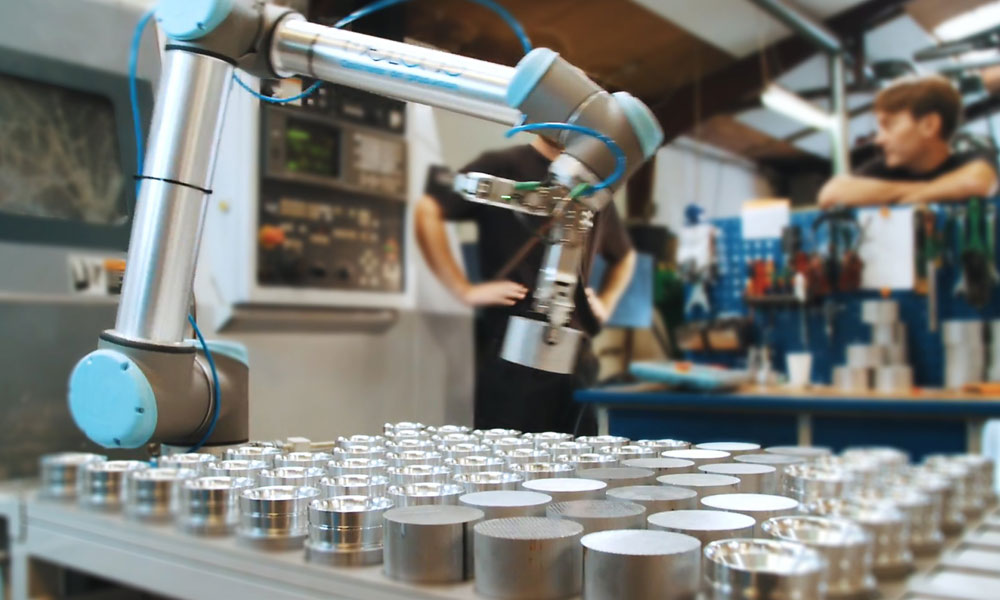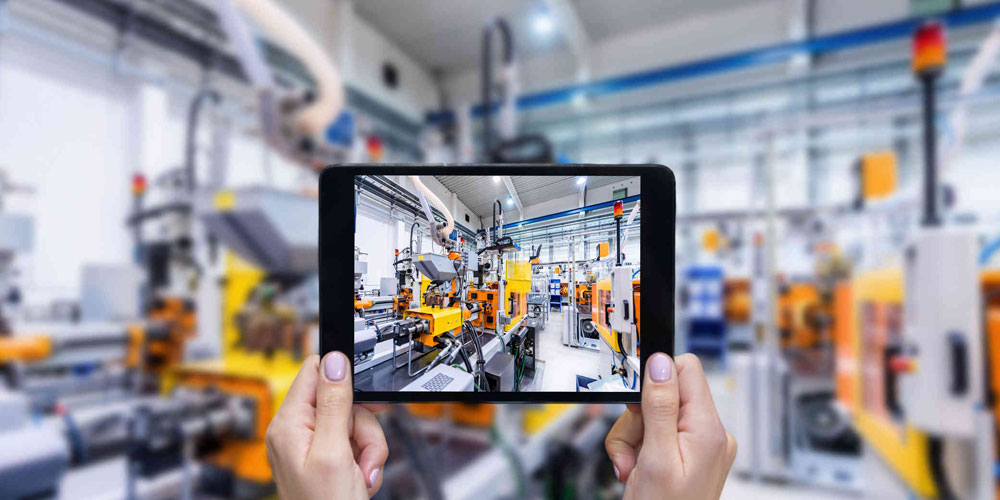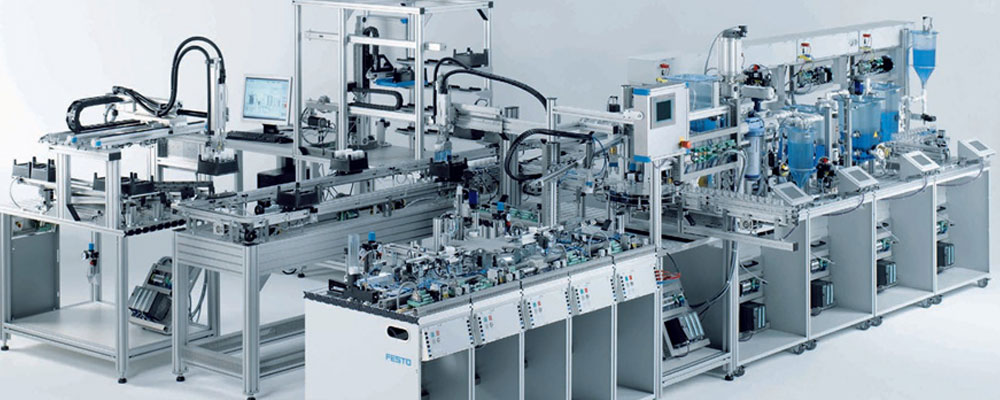Exploring the Cutting Edge: Current Trends in Industrial Automation
Industrial automation refers to the use of technology to automate and control manufacturing processes in industries such as automotive, aerospace, chemical, and food processing. It involves the integration of various technologies such as sensors, robotics, artificial intelligence, and software to improve efficiency, reduce costs, and enhance safety in manufacturing processes.
Industrial automation has revolutionized the manufacturing industry by increasing productivity, reducing labor costs, and improving the quality of products. It has become an essential aspect of modern manufacturing and is rapidly evolving with the advent of new technologies and innovations.

The Importance of Innovation in the Industry
The industrial automation industry is constantly evolving, and innovation plays a crucial role in driving progress. With the rapid advancements in technology, businesses must adapt and innovate to remain competitive and meet the changing demands of the market. Innovation helps to improve efficiency, increase productivity, and reduce costs, ultimately leading to greater profitability and success. Furthermore, innovative solutions can also enhance workplace safety and sustainability, promoting a positive impact on both the environment and society. Therefore, innovation is essential to the continued growth and success of the industrial automation industry.
The purpose of this blog post is to explore the current trends and future innovations in the field of industrial automation. It will provide insights into the latest technological advancements and their impact on the industry. The blog aims to inform readers about the latest developments and potential applications in automation, as well as to encourage discussion on the future direction of the industry.
The Current State of Industrial Automation
The Role of Automation in Modern Manufacturing
Enhancing Productivity and Efficiency
Faster Production Cycles with Minimal Downtime: Automation allows manufacturing processes to run continuously, reducing the time required for changeovers and maintenance, resulting in higher productivity levels.
Consistent and Precise Output with Reduced Variability: Automated systems can perform tasks with a high degree of accuracy and repeatability, ensuring consistent product quality and reduced defects.
Streamlined Processes through the Integration of Production Systems: Automation enables seamless communication and data exchange between various production stages, leading to a more efficient and optimized workflow.
Optimal Utilization of Resources, including Raw Materials, Energy, and Labor: Automated systems can optimize resource allocation, reducing waste and ensuring efficient use of materials, energy, and workforce.
Improving Product Quality and Reducing Defects
Precise and consistent manufacturing processes minimize human error: By replacing manual labor with automation, human error is minimized, resulting in a more consistent and precise production process.
Real-time monitoring and feedback systems for quality control: Automated quality control systems continuously monitor product quality, enabling immediate corrective actions and reducing defect rates.
Advanced inspection technologies ensuring defect detection and correction: State-of-the-art inspection technologies, such as machine vision, can quickly and accurately identify defects, ensuring consistent product quality.
Increased customer satisfaction and reduced product returns: Higher product quality leads to increased customer satisfaction and lower return rates, benefiting both manufacturers and consumers.
Enabling Flexibility and Customization
Adaptable production lines catering to varying product specifications: Automated production systems can be quickly reconfigured to produce different products or variations, allowing for greater flexibility in response to market demands.
Rapid response to market demands and changing consumer preferences: Automation enables manufacturers to quickly adapt their production processes to meet evolving customer needs and preferences.
Efficient small-batch production and reduced time-to-market: Automation allows for cost-effective small-batch production, enabling manufacturers to respond quickly to market trends and reduce time-to-market for new products.
Customization and personalization of products without significant cost increases: Advanced manufacturing technologies enable cost-effective customization and personalization of products, catering to the growing demand for unique and tailored products.
Increasing Worker Safety and Reducing Labor Costs
Automation of repetitive, dangerous, or physically demanding tasks: By automating hazardous or physically demanding tasks, worker safety is improved, and the risk of workplace injuries is reduced.
Reduction of workplace injuries and accidents: Automation can reduce the likelihood of accidents caused by human error or fatigue, leading to a safer work environment.
Streamlined workforce focused on higher-value tasks and decision-making: Automation allows workers to focus on more strategic and value-added tasks, resulting in a more efficient and skilled workforce.
Lower long-term labor costs and improved employee satisfaction: With the implementation of automation, manufacturers can reduce labor costs, while also improving employee satisfaction by enabling workers to focus on more fulfilling tasks.
Supporting Sustainable and Eco-Friendly Manufacturing
Efficient use of resources and reduction of waste: Automation can optimize resource consumption, resulting in less waste and more sustainable production processes.
Energy-saving production technologies and smart energy management systems: Automated systems can monitor and optimize energy usage, resulting in reduced energy consumption and lower greenhouse gas emissions.
Integration of renewable energy sources and green initiatives: Automation technologies can support the integration of renewable energy sources and green initiatives into the manufacturing process, further promoting sustainable production.
Compliance with environmental regulations and reduced environmental impact: Automation can help manufacturers comply with environmental regulations by reducing waste, energy consumption, and emissions, contributing to a cleaner environment.

Key Drivers of Industrial Automation Growth
Technological advancements: Rapid progress in areas such as artificial intelligence, robotics, and the Internet of Things (IoT) has significantly expanded the capabilities of industrial automation systems, making them more versatile, efficient, and cost-effective.
Global competition: Manufacturers are under constant pressure to improve productivity and reduce costs to remain competitive in the global market. Industrial automation offers a way to achieve these goals by streamlining processes, reducing labor costs, and increasing overall efficiency.
Increasing demand for high-quality products: Consumers expect higher quality and more customized products, which can be more efficiently and consistently produced using industrial automation technologies.
Workforce challenges: An aging workforce, combined with a shortage of skilled labor in some sectors, has led manufacturers to turn to automation as a means to maintain production levels while reducing reliance on manual labor.
Focus on sustainability and energy efficiency: With growing concerns about climate change and resource depletion, manufacturers are increasingly seeking ways to reduce their environmental footprint. Automation can help optimize resource usage, minimize waste, and improve energy efficiency in the production process.
Rapidly changing market demands: The pace of change in consumer preferences and technology is accelerating, requiring manufacturers to be more agile and adaptable. Industrial automation enables faster responses to market shifts and the ability to produce a wider range of products with shorter lead times.
The need for improved worker safety: Automation can help reduce workplace accidents and improve safety conditions by taking over dangerous, repetitive, or physically demanding tasks that were previously performed by human workers.
Government policies and incentives: Governments around the world are encouraging the adoption of advanced manufacturing technologies through various policies, tax incentives, and investment programs. This support has been a key driver in promoting the growth of industrial automation.
Cost reductions in automation technologies: As the cost of sensors, robots, and other automation components decreases, it becomes more affordable for manufacturers to implement automation solutions, even in smaller production facilities.
Industry 4.0 and digital transformation: The ongoing shift towards Industry 4.0, characterized by the integration of digital technologies and data-driven decision-making, has been a major driver of industrial automation growth, as manufacturers look to leverage these new technologies to gain a competitive edge.

Technological Advancements Shaping the Industry
Several technological advancements are shaping the industrial automation industry, leading to more efficient, flexible, and intelligent manufacturing systems. Some of the most influential technologies include:
Robotics and Collaborative Robots (Cobots): Advanced robotics and cobots have become integral to modern manufacturing processes. Cobots can work alongside humans, providing a safer and more efficient environment by taking over repetitive or dangerous tasks.
Artificial Intelligence (AI) and Machine Learning: AI and machine learning are enabling automation systems to become more adaptive and intelligent. They can analyze data, optimize processes, predict maintenance needs, and improve decision-making, leading to enhanced efficiency and productivity.
Industrial Internet of Things (IIoT): The IIoT connects machines, sensors, and devices, allowing real-time data collection and analysis. This connectivity enables improved process monitoring, predictive maintenance, and better resource management, resulting in optimized production.
Big Data and Advanced Analytics: The ability to collect and analyze vast amounts of data generated by industrial processes enables better decision-making and process optimization. Advanced analytics can identify patterns and trends, helping manufacturers make data-driven decisions to improve efficiency and reduce costs.
Digital Twins and Simulation: Digital twins create virtual representations of physical assets or processes, allowing manufacturers to simulate, predict, and optimize performance. This technology enables testing and experimentation without disrupting actual production, leading to faster innovation and reduced time-to-market.
Edge Computing: Edge computing brings data processing and analytics closer to the source of data generation, reducing latency and improving real-time decision-making. This is especially important in industrial automation, where real-time data processing is crucial for optimizing production processes.
Additive Manufacturing (3D Printing): Additive manufacturing, or 3D printing, allows for rapid prototyping, customization, and the production of complex parts. This technology is transforming manufacturing by enabling more flexible, efficient, and cost-effective production methods.
Augmented Reality (AR) and Virtual Reality (VR): AR and VR technologies are being used to improve workforce training, remote maintenance, and process visualization. These immersive technologies can enhance worker capabilities, reduce errors, and improve overall productivity.
Advanced Sensors and Vision Systems: Sensors and vision systems are becoming more sophisticated and affordable, enabling better monitoring and control of industrial processes. These technologies provide real-time information on production conditions, leading to improved quality control and increased efficiency.
Cybersecurity: As industrial automation systems become increasingly interconnected, cybersecurity is of paramount importance. Advances in cybersecurity technology are essential for protecting sensitive data, ensuring system integrity, and preventing costly production disruptions due to cyberattacks.
Recent Trends in Industrial Automation
Robotics and Cobots (Collaborative Robots)
Rise in popularity: Robotics and cobots are becoming increasingly popular in various industries due to their ability to improve efficiency, productivity, and worker safety. They are transforming the manufacturing landscape by performing tasks that are repetitive, dangerous, or require high precision.
Ease of integration: Modern robots and cobots are designed to be easily integrated into existing production lines, making it simpler for manufacturers to adopt these technologies. Many cobots come with user-friendly programming interfaces, allowing employees to quickly learn and manage their operations.
Enhanced human-robot collaboration: Cobots are designed to work alongside human workers, with built-in safety features such as force-limited joints, sensors, and responsive behavior. This collaboration allows for a more flexible and efficient production environment.
Customizable and adaptable: Robotics and cobots can be customized to perform a wide range of tasks, such as assembly, material handling, welding, and quality inspection. They can also be easily reprogrammed or reconfigured to adapt to changing production requirements.
Advanced machine vision: Robots and cobots are increasingly being equipped with advanced vision systems, allowing them to better identify objects, navigate complex environments, and perform precise tasks. Machine vision enables robots to perform quality inspections, pick-and-place operations, and more with high accuracy.
Remote monitoring and control: Robotics and cobots can be monitored and controlled remotely, allowing manufacturers to better manage their operations and make adjustments as needed. This can lead to improved efficiency and reduced downtime.

Machine Learning and Artificial Intelligence
Enhanced process optimization: Machine learning and AI can analyze vast amounts of data generated by industrial processes, enabling real-time optimization of production. This results in improved efficiency, reduced waste, and lower costs.
Predictive maintenance: AI-driven predictive maintenance systems can analyze historical and real-time data to identify patterns and predict equipment failure, allowing for proactive maintenance and reduced downtime.
Natural language processing: AI-based natural language processing can be used to interpret and respond to voice commands, allowing for more efficient and intuitive human-machine interactions.
Advanced data analytics: Machine learning and AI can analyze large datasets to identify trends, correlations, and insights that can help inform decision-making and improve business processes.
Simulation and modeling: AI can be used to create complex simulations and models of industrial processes, enabling manufacturers to test and optimize production scenarios without disrupting actual operations.
Workforce enhancement: AI and machine learning can help human workers by providing real-time guidance, automating repetitive tasks, and assisting in complex decision-making. This can lead to a more efficient and skilled workforce focused on higher-value tasks.
Industrial Internet of Things (IIoT)
Enhanced connectivity: The IIoT enables seamless connectivity between machines, sensors, devices, and systems, allowing for real-time data exchange and communication across various industrial processes.
Data-driven decision-making: The vast amounts of data generated by connected devices can be analyzed and used to make informed decisions, leading to more efficient and optimized production processes.
Remote monitoring and control: IIoT technologies allow manufacturers to remotely monitor and control their production facilities, providing better visibility into operations, quicker response times, and reduced downtime.
Predictive maintenance: By continuously monitoring equipment performance, IoT technologies can predict potential failures and schedule maintenance proactively, reducing unexpected downtime and improving overall equipment effectiveness.
Asset tracking and optimization: IIoT-enabled asset tracking systems can provide real-time information on the location and status of equipment and inventory, leading to improved resource management and reduced waste.
Smart factories and Industry 4.0: IIoT is a key component of the smart factory and Industry 4.0 concepts, which involve the digital transformation of manufacturing processes, leveraging interconnected systems, data analytics, and automation to optimize production.
The Future of Industrial Automation: Emerging Innovations
Industry 5.0 and Human-Robot Collaboration
Enhanced cooperation: Industry 5.0 aims to further enhance collaboration between humans and robots, emphasizing their complementary strengths for more efficient and flexible manufacturing processes.
Cognitive automation: The focus will be on cognitive automation, where robots and machines can learn from human expertise and decision-making to perform tasks more intelligently.
Customization and personalization: Industry 5.0 will enable greater customization and personalization of products, as human workers focus on creative tasks and robots handle repetitive and precise tasks.
Augmented and Virtual Reality in Manufacturing
Immersive training: AR and VR technologies will be increasingly used for workforce training, providing immersive, hands-on experiences that improve learning and retention.
Remote maintenance and support: AR and VR will enable remote maintenance and support, allowing experts to assist on-site personnel in real-time, reducing downtime and improving efficiency.
Process visualization and optimization: Manufacturers can use AR and VR to visualize processes, identify bottlenecks, and optimize production workflows.
Smart Factories and Predictive Maintenance
Advanced data analytics: Smart factories will leverage advanced data analytics to optimize production processes, reduce waste, and improve efficiency.
Self-healing systems: Predictive maintenance technologies will evolve, leading to self-healing systems that can automatically detect and repair issues before they cause significant downtime.
Real-time decision-making: Smart factories will be able to make real-time decisions based on data, allowing for more agile and responsive production processes.
5G and Wireless Communication Technologies
Enhanced connectivity: 5G and other advanced wireless technologies will enable faster, more reliable, and secure communication between devices, sensors, and systems in industrial settings.
Reduced latency: The lower latency of 5G will enable real-time data processing and decision-making, enhancing the efficiency of industrial automation systems.
Enabling new applications: 5G will facilitate the development and implementation of new applications, such as autonomous mobile robots and remote control of machinery.
Modular Production Systems and Flexible Manufacturing
Scalability and adaptability: Modular production systems will allow manufacturers to easily scale and adapt their production lines to accommodate changing demands or integrate new technologies.
Reduced downtime: Modular systems will enable faster reconfiguration and reduced downtime during changeovers or maintenance.
Customizable solutions: Flexible manufacturing technologies will facilitate the production of a wide range of products with varying specifications, allowing manufacturers to better respond to market demands.
Energy Efficiency and Sustainable Production Processes
Smart energy management: Advanced energy management systems will enable manufacturers to optimize energy consumption, reducing costs and environmental impact.
Circular economy: The adoption of circular economy principles will promote the reuse, recycling, and remanufacturing of materials, leading to more sustainable production processes.
Green technologies: The integration of renewable energy sources and green technologies will further reduce the environmental footprint of industrial processes.
Blockchain Technology in Supply Chain Management
Enhanced traceability: Blockchain technology can provide secure and transparent traceability throughout the supply chain, improving visibility and accountability.
Smart contracts: The use of smart contracts can automate and streamline transactions, reducing errors, delays, and costs.
Collaboration and data sharing: Blockchain can foster collaboration and data sharing between different stakeholders in the supply chain, enabling more efficient and agile operations.

The Impact of Innovations on Industrial Automation
Improved Productivity and Efficiency
Advanced automation technologies: The implementation of cutting-edge automation technologies, such as robotics, AI, and IIoT, will lead to significant improvements in productivity and efficiency in manufacturing processes.
Data-driven decision-making: The vast amounts of data generated by connected devices and systems will enable manufacturers to make more informed decisions, optimizing production processes, and reducing downtime.
Labor optimization: Innovations in industrial automation will help companies better utilize their workforce, shifting employees from repetitive and manual tasks to higher-value, more strategic roles.
Process integration: The integration of different production systems and processes will streamline operations, improving overall productivity and enabling manufacturers to respond more quickly to changing market demands.
Reduced variability: Automation technologies will reduce variability in production processes, ensuring more consistent output and improving overall product quality.
Continuous improvement: Advanced data analytics and machine learning will allow manufacturers to continuously refine and improve their production processes, leading to long-term gains in productivity and efficiency.
Enhanced Safety and Working Conditions
Automation of hazardous tasks: Automation will take over repetitive, dangerous, or physically demanding tasks, reducing the risk of workplace injuries and accidents.
Improved ergonomics: Advanced technologies will create more ergonomic and comfortable working conditions, contributing to better employee well-being and satisfaction.
Workforce upskilling: Employees will have the opportunity to learn new skills and focus on more strategic and creative tasks, leading to greater job satisfaction and career development.
Enhanced monitoring: Real-time monitoring and data analysis of working conditions will help to identify and mitigate potential safety hazards more effectively.

Customization and On-Demand Manufacturing
Flexible production lines: Innovations in automation will allow manufacturers to efficiently adapt production lines to create customized products, catering to specific customer needs and preferences.
Rapid response to market changes: On-demand manufacturing will enable manufacturers to quickly respond to market shifts, minimizing inventory costs, and reducing waste.
Small-batch production: Advanced automation technologies will make it easier and more cost-effective to produce small batches of customized products, meeting niche market demands.
Mass customization: Combining the efficiency of mass production with the personalization of bespoke products, innovations in industrial automation will enable manufacturers to offer mass-customized products at competitive prices.
Shortened Time-To-Market and Increased Competitiveness
Accelerated product development: Innovations in industrial automation will speed up the product development process, allowing manufacturers to bring new products to market more quickly.
Enhanced agility: Advanced automation technologies will enable manufacturers to rapidly adapt to changing market conditions, making them more agile and competitive.
Reduced production costs: Improved productivity and efficiency will result in lower production costs, making companies more competitive in the market.
Global competitiveness: By adopting advanced automation technologies, manufacturers can compete more effectively on a global scale, driving innovation and economic growth.
Sustainable Manufacturing and Reduced Environmental Footprint
Resource optimization: Automation innovations will enable more efficient use of resources, such as raw materials and energy, reducing waste and promoting sustainability.
Energy-efficient technologies: The implementation of energy-efficient technologies in industrial automation will help to reduce energy consumption and greenhouse gas emissions.
Circular economy principles: The adoption of circular economy principles will encourage the reuse, recycling, and remanufacturing of materials, leading to more sustainable production processes.
Green initiatives: The integration of green technologies and renewable energy sources in industrial automation will help to reduce the environmental impact of manufacturing processes and contribute to global sustainability goals.
Challenges and Opportunities in Adopting New Technologies
Cost and Investment Considerations
Initial investment: The adoption of advanced automation technologies often requires a significant upfront investment, which can be a challenge for smaller manufacturers or those with limited resources.
ROI assessment: Companies need to carefully evaluate the potential return on investment (ROI) of new technologies to ensure that the benefits outweigh the costs.
Ongoing maintenance and updates: Advanced technologies may require regular maintenance and updates, adding to the overall cost of implementation.
Workforce Training and Skills Ddevelopment
Skill gap: The shift towards advanced automation technologies requires workers to acquire new skills, which may create a skill gap in the workforce.
Training programs: Companies need to invest in training programs and continuing education for their employees to ensure they are equipped to work with new technologies.
Retraining and reskilling: The transition to advanced automation may require the retraining or reskilling of existing workers, which can be time-consuming and costly.
Security and Privacy Concerns
Cybersecurity risks: As industrial automation relies more on connected systems and devices, the risk of cyberattacks and data breaches increases.
Protecting sensitive data: Companies need to ensure that they have robust security measures in place to protect sensitive data and intellectual property.
Compliance with regulations: Manufacturers must comply with data privacy and security regulations, which can vary across different regions and industries.
Integration with Existing Systems and Processes
Compatibility issues: New technologies may not be compatible with existing systems and processes, requiring additional investments in upgrades or modifications.
Interoperability: Ensuring seamless communication and data sharing between different systems and devices can be a challenge when adopting new technologies.
Change management: Companies need to manage the transition to new technologies effectively, addressing any potential disruptions to existing workflows and operations.
Overcoming Resistance to Change
Employee apprehension: Resistance to change can be a challenge, as employees may feel threatened by the introduction of new technologies and fear job displacement.
Organizational culture: Companies need to foster a culture of innovation and continuous improvement to support the adoption of new technologies.
Leadership commitment: Strong leadership commitment and clear communication of the benefits of new technologies are crucial to overcoming resistance and driving successful implementation.

Conclusion
Industrial automation has revolutionized the manufacturing landscape by enhancing productivity, improving product quality, increasing worker safety, and promoting sustainable production processes. The adoption of advanced technologies, such as robotics, AI, IoT, and digital twins, has driven significant improvements in efficiency and competitiveness across various industries.
Despite the challenges associated with cost considerations, workforce training, security concerns, and resistance to change, companies that successfully implement industrial automation can reap considerable benefits. By examining case studies of companies leading the way in automation innovation, we can learn valuable lessons and best practices that can be applied to other organizations seeking to embrace these transformative technologies.
As we look to the future, ongoing developments in automation technology promise to further reshape the manufacturing industry. It is crucial for businesses to stay informed about current trends and emerging innovations, as well as to invest in research and development to stay competitive in the global market. By fostering a culture of innovation and continuous improvement, companies can capitalize on the opportunities presented by industrial automation, ensuring long-term success and growth in an increasingly dynamic and competitive environment.
